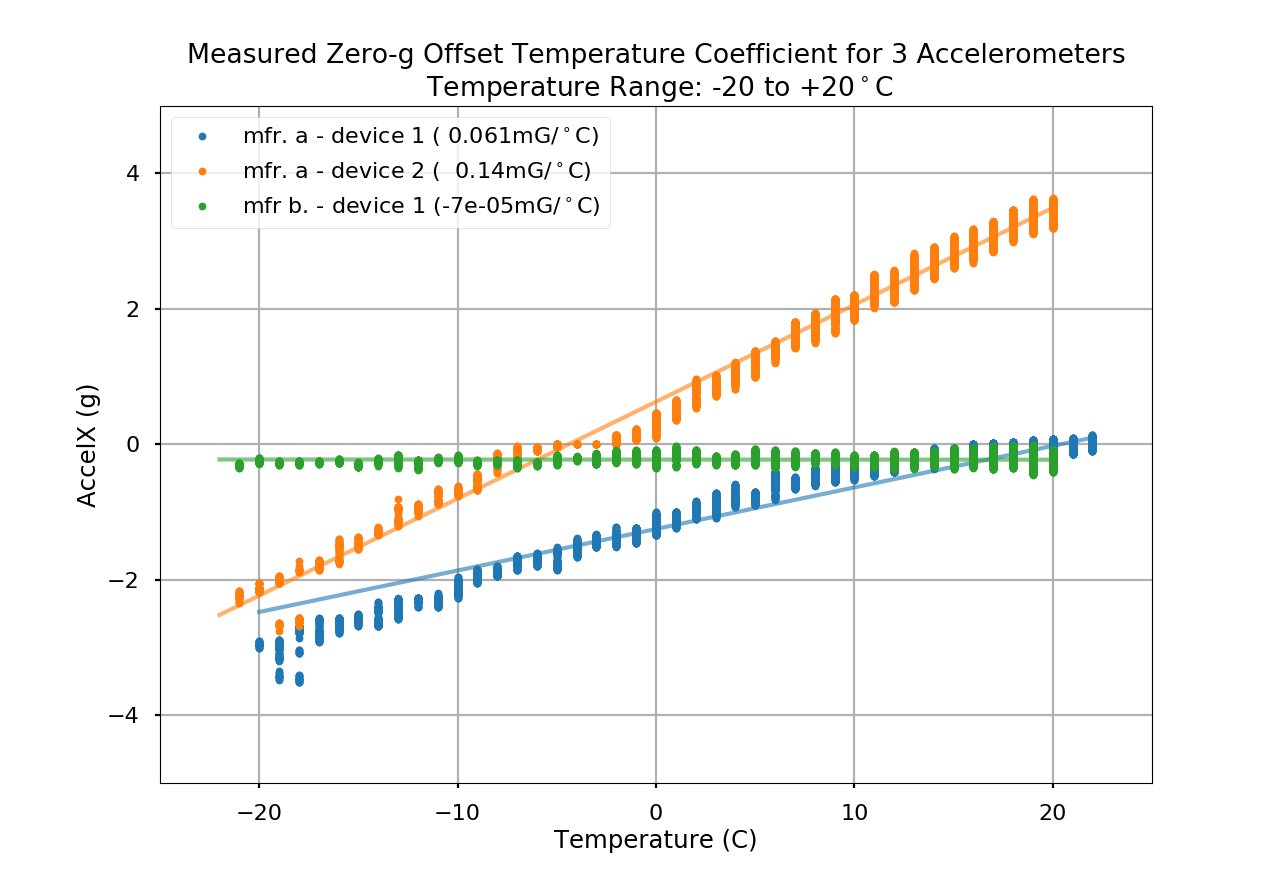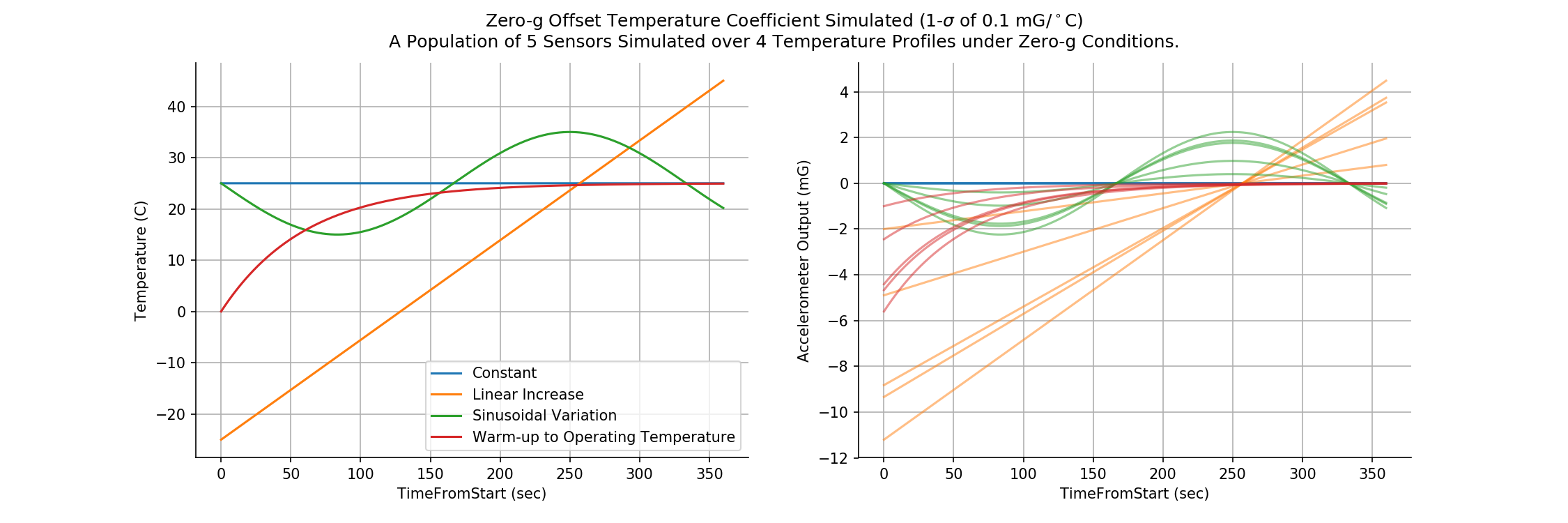Easily process IMU data from your browser using imuengine.io
Accelerometer: Zero-g offset Temperature Coefficient
Other Names
bias thermal drift, offset temperature slope, offset or bias thermal response
Examples
| Device | Name | Value |
|---|---|---|
| Honeywell HG1120BA50 | Bias Repeatability is given over both time and thermal conditions | NA |
| CTi Sensors CS-IM100 | Bias change versus temperature | ±0.2mG/$^\circ$C |
The accelerometer offset temperature coefficient describes deviation from the truth due to temperature changes. Mores specifically, changes in temperature from a nominal 25$^\circ$C condition. The accelerometer zero-g offset is nominally specified at a fixed temperature. That means it simply describes the temperature-independent bias statistics. In contrast, the zero-g offset temperature coefficient describes the temperature-dependent component of the sensor bias statistics.
This specification is measured by placing the accelerometer axis under evaluation into a zero-g condition. This is necessary to remove the impact of scale-factor errors. The turn-on bias is then logged over a range of temperatures. This data is used to draw a plot of zero-g offset vs temperature. Here is a plot of the type of data that would be logged for determining this specification:

If the response is linear, the slope of this plot describes the zero-g offset temperature coefficient, typically reported in units of mG/$^\circ$C. If the response is non-linear or contains discontinuities, then the parameter is best presented by sharing this plot with the end user. They may, for example, specify the maximum deviation for a population of sensors as the zero-g offset temperature coefficient.
Single Sensor or a Population of Sensors
The data sheet specification is to capture the performance of a population of sensors. It is not a calibration sheet for an individual sensor. Hence, it is unwise to use the temperature coefficient in order to correct for temperature effects. If this is desired, one must measure the response for a particular sensor and use the associated coefficient as a calibration parameter.
Higher grade sensor packages may already be calibrated for temperature effects. In this case the zero-g offset temperature coefficient captures residual errors in bias which are temperature dependent. These are the random (or higher-order unmodeled) temperature-dependent error components.
Specification
The zero-g offset temperature coefficient falls into the class of temperature-dependent errors. The importance of this parameter to an application will depend on two things:
- The range of temperatures over which the system is expected to operate
- The impact of sensor bias on the system accuracy
It is the product of temperature range and zero-g offset temperature coefficient which defines the size of the temperature-dependent sensor bias. Only one of the two terms needs to be large in order for the product to become significant. The size of this parameter can be compared with the accelerometer zero-g offset term. The larger of the two will be the dominant accelerometer static bias which should be considered.
As was the case for the zero-g offset, one must then consider the impact of sensor bias on the system accuracy. How does the system performance degrade (or become increasingly uncertain) as the size of the possible sensor bias increases? Specifying the zero-g offset temperature coefficient requirement will depend on the sensor fusion algorithm's utility of this sensor reading.
Points to Consider
- Applications operating over a wider temperature range will need to pay particular attention to temperature-dependent error terms like the zero-g offset temperature coefficient.
- Using a temperature calibrated accelerometer will result in a significant improvement in the temperature-dependent errors. This, however, does take time and effort as the calibration must be done for each individual device and sensor axis.
Final Thoughts
The zero-g offset temperature coefficient is part of a larger class of temperature-dependent errors. Applications operating over a wide temperature range should pay particular attention to this specification.
Simulation Example


